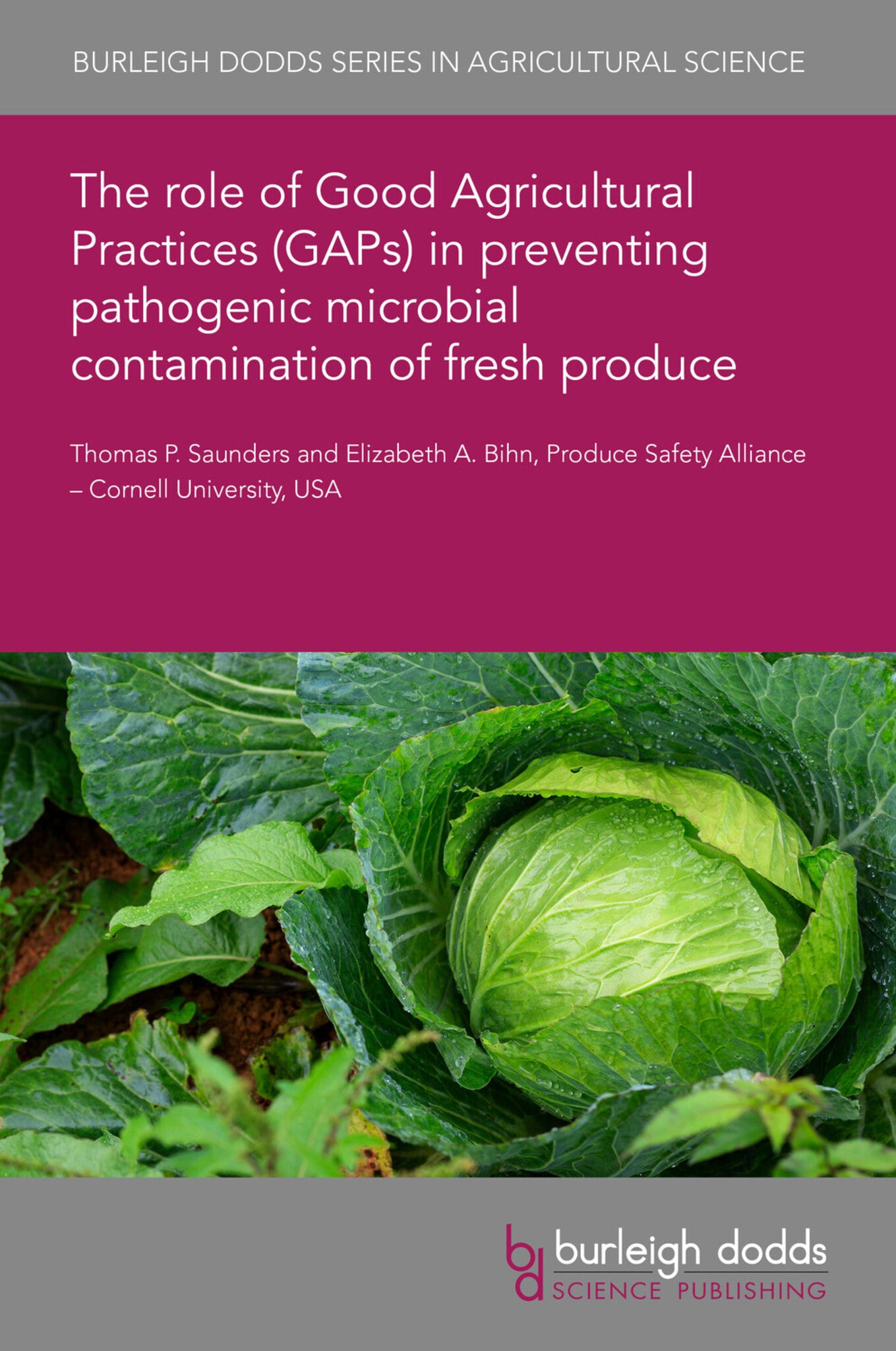We're sorry. An error has occurred
Please cancel or retry.
The role of Good Agricultural Practices (GAPs) in preventing pathogenic microbial contamination of fresh produce

Some error occured while loading the Quick View. Please close the Quick View and try reloading the page.
Couldn't load pickup availability
- Format:
-
14 August 2023

The microbial safety of fresh fruits and vegetables impacts the health of consumers and the economic viability of farms, packinghouses, and the produce industry. The implementation of Good Agricultural Practices (GAPs) on farms and in packinghouses over the past 24 years has resulted in an increase in written farm food safety plans and targeted practices aimed at reducing the risks of microbial contamination. Growers have expanded their mindset and management practices to include food safety in addition to the myriad of other production goals including improving crop yield, controlling pests, maintaining market access, and ensuring postharvest quality. The focus of this chapter is to review the role of GAPs in preventing microbial contamination of fresh produce over time. This includes summarizing how GAPs have evolved, the impact they have had on the produce industry, current GAPs and how they are implemented, and projecting their relevance into the future.

SCIENCE / Life Sciences / Horticulture, Commercial horticulture, TECHNOLOGY & ENGINEERING / Food Science / Food Safety & Security, TECHNOLOGY & ENGINEERING / Agriculture / Agronomy / Crop Science, TECHNOLOGY & ENGINEERING / Agriculture / Sustainable Agriculture, Sustainable agriculture, Agricultural science, Agronomy and crop production

- 1 Introduction
- 2 Evolution of Good Agricultural Practices from voluntary to regulation
- 3 Reasons for adopting Good Agricultural Practices
- 4 Why Good Agricultural Practices remain the foundation for fresh produce safety
- 5 Commitment and training
- 6 Scalability of Good Agricultural Practices
- 7 Feasibility of implementing Good Agricultural Practices
- 8 Assessing risks
- 9 Good Agricultural Practices: always room for improvement
- 10 Produce safety adds to farming stress
- 11 Good Agricultural Practices relevance for the future
- 12 Conclusion
- 13 Where to look for further information
- 14 Acknowledgement
- 15 References



